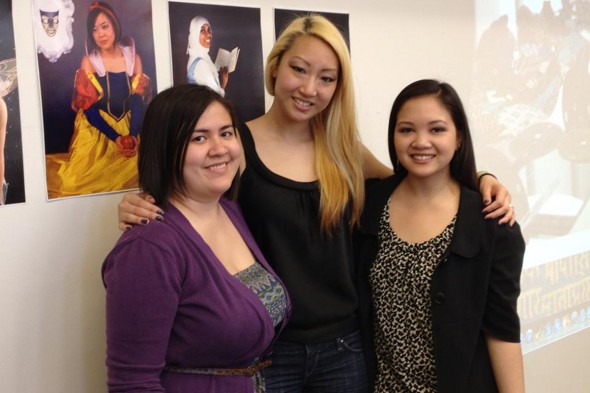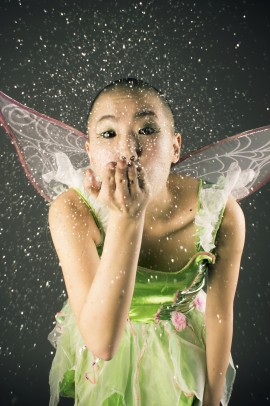Reimagining the look of Disney princesses
Seniors Kim Navoa, Donnie Chang and Rachelle Johnson have something in common: childhood memories of watching Disney movies.
But they also shared a sense that they weren’t like the traditionally Caucasian princesses.
So they reimagined Disney princesses to look more like they do, creating a photography series of diverse princesses. Their work was part of a research project for the UIC Asian American and Native American Pacific Islander-Serving Institutions initiative, a collaboration of the Asian American Studies department and Asian American Resource and Cultural Center.
“We chose Disney princesses because it was something we had in common. Even though it was such a huge part of our childhoods, there was just always something that felt off about how we could relate to them,” said Navoa, a photography student. “It was hard because physically, they didn’t look like us.”
Since “Snow White” was released 76 years ago, only five of 13 Disney princesses have been portrayed as women of color. The first was Jasmine from “Aladdin” in 1992. Other diverse Disney princesses include Pocahontas (1995), Mulan (1998), Kida (2001) and Tiana (2009).
“It wasn’t until Pocahontas, Mulan and Tiana came around, but that’s when we were older,” added Chang, a psychology student. “When I was in elementary school, Belle was the only one I could relate to because she had dark hair.”
The photo series, posted to Navoa’s Tumblr site, is gaining a lot of attention. It has received more than 10,000 hits and was featured in Huffington Post and social media outlets.

Rachelle Johnson, Donnie Chang and Kim Navoa (L-R) did a research and photo project that reimagined female Disney characters.
Although much of the response was positive, they have received some criticism. Some told the students they were offended by the project, which included one representation of Belle from “Beauty and the Beast” wearing a Muslim headscarf called a hijab.
“Some Asian-Americans wear hijabs,” Navoa said. “If we left that out, it wouldn’t be an accurate representation and we would be excluding people. We don’t want anyone to feel excluded. It’s about being who you are.”
They would like to complete a second photography series that includes newer Disney characters, such as Meredith from “Brave” and Vanellope from “Wreck-It Ralph.”
They’ve received positive responses, too, from parents who show the photography series to their children.
“These stories are not just limited to characters that look white American; everyone can connect to the Disney stories,” Chang said.
“If they [children] can feel any type of connection to our Asian-American Disney princesses, that would make me happy.”

